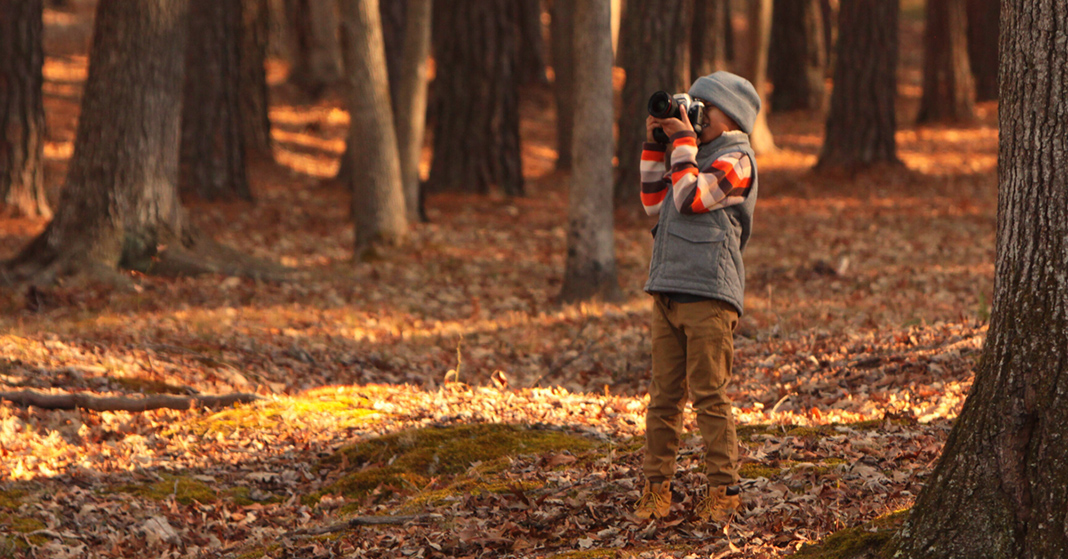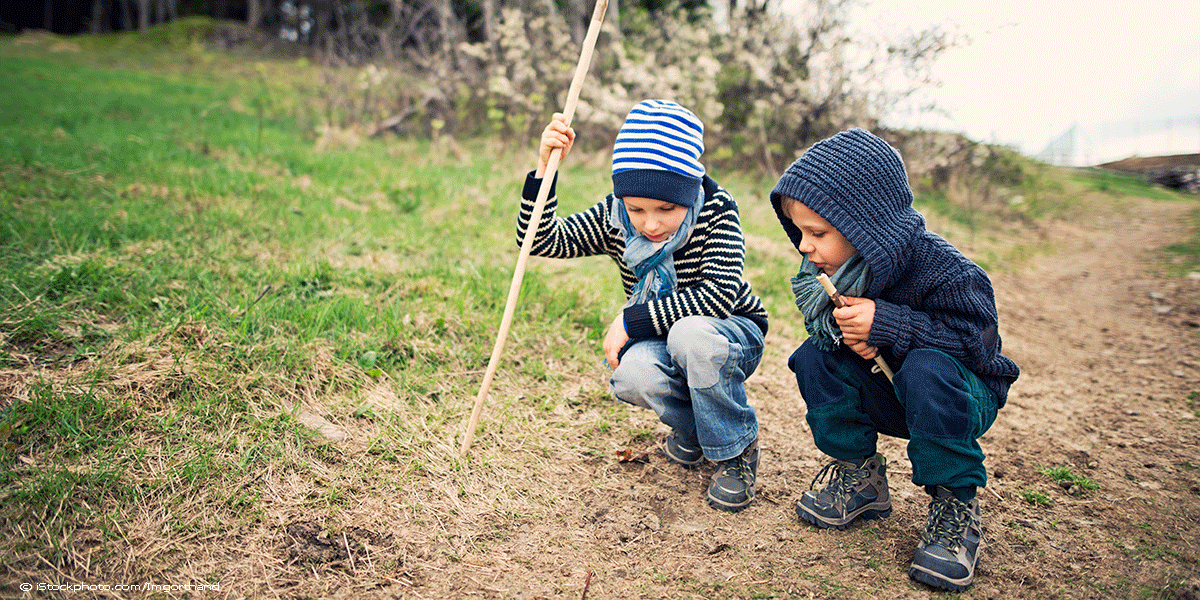
Our family loves hiking. In fact, we think that any time except the dead of winter is the perfect time for a hike! We love the sense of freedom, of adventure, of separation from a too-busy world. And in the fall, hiking can be an even more enjoyable and educational experience.
Creation reveals its Creator, and what better way to train up young scientists than by turning your trek through the forest into a science hike? Here are five things you’ll need for a science hike with your kids.
1. Notebooks for Recording Observations on the Science Hikes
Notebooks and pencils are a must-have on any science hike. Every child, from the toddler to the teen, can take notes about what he or she sees.
For the little ones, making drawings or writing down one-word labels might be as far as they go. Older kids can draw more detailed sketches of animals or plant life and make a few observational notes. You can take breaks throughout the science hike to allow time for drawing and writing.
2. Cameras for Taking Photos
Taking photos of nature is a great way to hone budding observation skills. You may not want to hand over your smartphone to your five-year-old, but there are sturdy, kid-friendly cameras on the market that are ideal for small hands. Or maybe you have an old phone in a drawer, one that you never use and don’t really need. Why not repurpose it as a kid-friendly camera?
Plants, trees, seeds, nuts, buds, flowers, earth, wildlife, insects, and bodies of water are perfect photography subjects for young scientists. If you have been focusing on a particular science unit in homeschool, such as plant life cycles or different kinds of clouds, encourage the kids to photograph anything related to that topic.
3. Sample Collection Containers for Found Items
Kids love to find “treasures” in nature—sparkly rocks, twisted twigs, interesting flowers, dead insects, and brightly colored leaves. Bring along some resealable bags or plastic containers to hold all the samples.
When you get home, have your kids work on identifying what they’ve found. Can they match a colorful leaf to the type of tree it came from? What sort of beetle did they find? Which minerals make that sparkly rock so pretty? They can write their findings on an index card and slip it into the box or bag that contains their treasure.
4. Drinks and Snacks
As moms, we all know what happens when the kids get hungry and thirsty. It’s not a pretty picture! Keep those hunger pangs at bay by bringing along plenty of snacks and drinks for the trek, even if it’s not a long hike. If you’re carrying a baby on your back, recruit your older children to help tote the provisions.
5. A Sense of Adventure
While it’s a good idea to follow certain safety rules (no running out of sight, no straying too far off the trail, etc.), there’s also a time to let the restrictions relax and just have fun! Nature is beautiful and exciting to your children, and they’ll learn so much from simply running, climbing, scrambling, and skipping through it! Take your time, and enjoy their delight in the big world God has made.
• • • • •
Rebecca is a work-at-home freelance writer, novelist, wife, and the mom of two bright-eyed little ones. She credits her success in writing and her love of books to her own mom, who homeschooled three kids from pre-K through high school.



